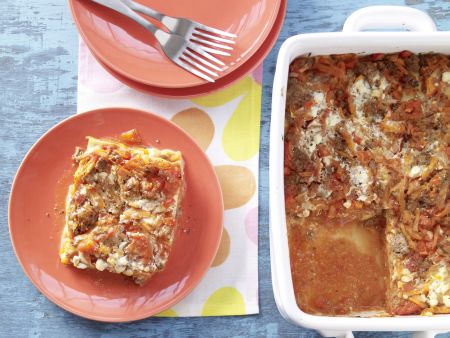Cottage Cheese
Cottage cheese is a versatile, nutrient-packed ingredient that's great for those trying to stay healthy, and especially for dieters.

Cottage cheese...
- ...is great for athletes.Cottage cheese’s low calorie content and abundance of protein makes it a perfect snack for powering a workout, and even helps build muscles.
- ...is brain food.Cottage cheese contains a relatively high amount of magnesium, which combined with its high protein content can help support healthy brain function.
- ...is a must for dieters.It’s no coincidence that cottage cheese is a staple on diet plans. It’s one of the leanest cheeses available, but has plenty of protein, calcium and a delicious, filling consistency and flavor.
- ...is easily-digestible.Thanks to its short-chain fatty acids, cottage cheese is generally good for people with a sensitive stomach.
- ...strengthens the bones.With 100 milligrams of calcium plus 170 milligrams of phosphorus per 100 gram serving, cottage cheese can help strengthen bones and teeth and even help prevent osteoporosis.
- ...contains lactose.If you’re lactose intolerant, it’s best to stay away from cottage cheese; a 100 gram serving contains 3.3 grams of lactose.
- ...should be purchased plain.Cottage cheese comes in pre-seasoned or sweetened varieties, however these often contain high doses of sodium and sugar. It’s best to flavor plain cottage cheese at home, using fruits, jams or fresh herbs and spices.
What You Should Know About Cottage Cheese
Cottage cheese is now a very popular trend among many health-conscious people. Fitness fans love it thanks to its versatility and good nutritional composition. Unlike other cheeses, it is particularly low in fat. It was first produced in its current form by the English. Since it was often produced on small estates, it got its name "cottage cheese".
This mild cheese has a creamy but lump texture, with a mild, slightly acidic flavor, due to the lactic acid bacteria used in its production. The protein starter is made from pasteurised skimmed milk to which lactic acid bacteria, calcium chloride and an enzyme mixture are added. This combination and the subsequent coagulation produces the small, soft chunks that make the cheese so distinctive.
Origins
A form of cottage cheese was already being prepared in ancient Egypt and Greece over 5,000 years ago. The English first produced cottage cheese in its current form.
Flavor
Cottage cheese has a slightly sour and mild taste. Depending on the fat content, it tastes either full-bodied and creamy or rather neutral.
Varities
During production, the small cheese grains are mixed with fermented cream and salt to produce the finished fresh cheese. The fat content of the cottage cheese will depend on the fat content of the cream from which it was produced. Fat contents can vary from 20 percent, 10 percent or even just under 1 percent fat.
Our Favorite Recipes with Cottage Cheese
Find all our cottage cheese recipes here.
How Healthy Is Cottage Cheese?
Cottage cheese is low in calories and fat but rich in protein, making it a perfect snack, especially if you're on a high-protein diet. It also contains essential amino acids, and provides plenty of calcium, which we need for strong teeth and bones. It's also a great source of vitamin B12, which stimulates the production of red blood cells, and helps support healthy fat metabolism.
| COTTAGE CHEESE NUTRITIONAL INFO (100 g) | |
|---|---|
| Calories | 72 |
| Protein | 12.3 g |
| Fat | 4,3 g |
| Carbohydrates | 3.3 g |
| Fiber | 0 g |
What To Make With Cottage Cheese
Cottage cheese is incredibely versatile, and can be consumed plain or as an ingredient in a cooked recipe. Cottage cheese is delicious as a simple snack on bread, and topped with jam, fruit, or salmon and fresh herbs.
It's also a low-calorie and delicious ingredient you can use in many classic higher-fat dishes, including in lasagna or as a light topping on pizza.

















